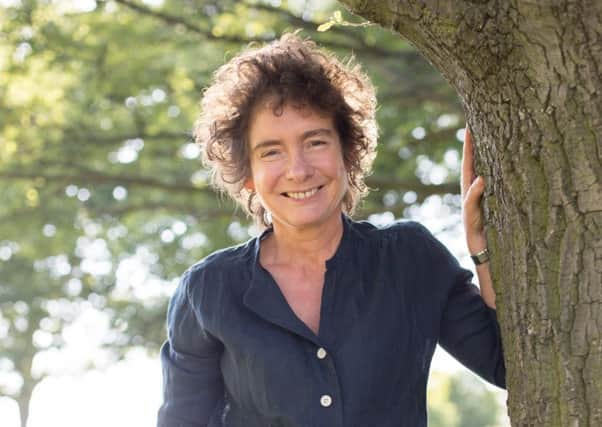Book reviews: The Gap of Time by Jeanette Winterson


The Gap of Time
By Jeanette Winterson
Vintage/Hogarth, 291pp, £16.99
Hogarth, the American fiction imprint of Random House, has been commissioning novelists to write new updated versions of Shakespeare’s plays, a project timed to coincide with next year’s 500th anniversary of his death. There is nothing new or deplorable in the venture. People have been adapting and revising Shakespeare for centuries.
In the late 17th century, the Poet Laureate, Nahum Tate, gave us King Lear with a happy ending. Shakespeare’s plays have been made into films, operas and ballets. Robert Nye made a fine first-person novel of Falstaff in the 1970s. Giles Gordon, my much missed friend and agent, commissioned and edited a volume of “Shakespeare Stories” more than 20 years ago. I can’t lay my hand on my copy, but I remember that I wrote the Othello story, making him a champion heavyweight boxer. So I can’t feel indignant about the Hogarth project.
Advertisement
Hide AdHoward Jacobson, taking on The Merchant of Venice, says authors must be “mad” to have a go at rewriting Shakespeare. Mad or not, the request to do so is surely hard to resist. Actually I don’t think it’s mad at all. Shakespeare is still there. Nothing you do can harm him. At worst, you make yourself look inadequate, but, since we are all inadequate in comparison with Shakespeare, this can’t matter.
Jeanette Winterson was assigned, or has chosen, The Winter’s Tale. It’s a puzzling play, like most late Shakespeare, one that, even without that most famous of stage directions – “exit, pursued by a bear” – offers a puzzle, a flight from realism, a sort of fairy story; and this suits her. She has a talent for coming to things from an odd angle. Dr Johnson judged that the play “with all its absurdities is very entertaining”, a criticism that might be applied to much of Winterson’s work. The play ends, you will remember, with a statue of the dead queen coming to life. Winterson says there are three possible endings to a story “if you put aside And They All Lived Happily Ever After”. They are “revenge, tragedy, forgiveness. Shakespeare knew all about revenge and tragedy. Towards the end of his working life, he became interested in forgiveness”. Forgiveness is the message – if it is a message – at the heart of his late plays, where dark clouds are shot through with sunshine, and then dispelled by it.
Shakespeare’s story begins in a royal court, but kings are out of fashion now. Instead of a king, Winterson has one of the modern masters of the universe, a hedge fund mogul called Leo. Like Shakespeare’s king, he is given to jealousy. He gets an assistant to install a webcam in his wife’s bedroom. The man he suspects is his oldest and best friend, Xeno – as schoolboys, they were lovers. Jealousy is one of the most corrupting of emotions. Winterson shows how it twists the afflicted one’s understanding or perception of reality. Leo is unsure of the paternity of his new baby (though he has tools not available to Shakespeare’s king). But the jealous man believes what he hopes to believe, which is also what he fears.
The second part of the story, pastoral in Shakespeare, is set in New Bohemia. (Shakespeare gave Bohemia a sea-coast, perhaps on account of ignorance, perhaps to assure them he is writing fantasy.) Winterson’s New Bohemia is equally charming. There, a boy and girl, both aged 17, meet and fall in love. But they don’t know who they are, and they understand very little of the world. Still they, like the other characters, will learn that. They will learn too that “time that runs so steady and sure runs wild outside of the clocks. It takes so little time to change a lifetime and it takes a lifetime to understand the change”. Well, that’s how it may seem anyway. Shakespeare, Winterson reminds us, “loved disguises, one thing or one kind masquerading as another – a girl who’s a boy who’s a girl. That things are not what they seem is the terror and the glory of The Winter’s Tale”.
Winterson is faithful to both the narrative and the spirit of the play, while transposing it to an utterly different and modern setting. She does this so deftly, with such authority, that her novel can surely be enjoyed by readers who have no knowledge of Shakespeare’s original, and this, I suppose, is one of the demands made by the Hogarth editors. But, of course, acquaintance with the play enriches the novel. Winterson is light, witty and inventive. But she is also at home on the dark side, adept at portraying the destructive nature of suspicion, jealousy, acquisitiveness, greed and the urge to command and dominate. She is faithful to her understanding of Shakespeare’s purpose. There are elements of the fairytale in both play and novel, but there is a significant difference. In a fairytale, the threat comes, she observes, from outside. “Shakespeare, anticipating Freud, outs the threat where it really is: on the inside”. When we harm others, we harm ourselves too – and may even be driven by the wish to do so. There is lightness here, in the frisky prose and the author’s delight in invention, but you are never free of the awareness of the dark shadows where danger and corruption lie in wait.